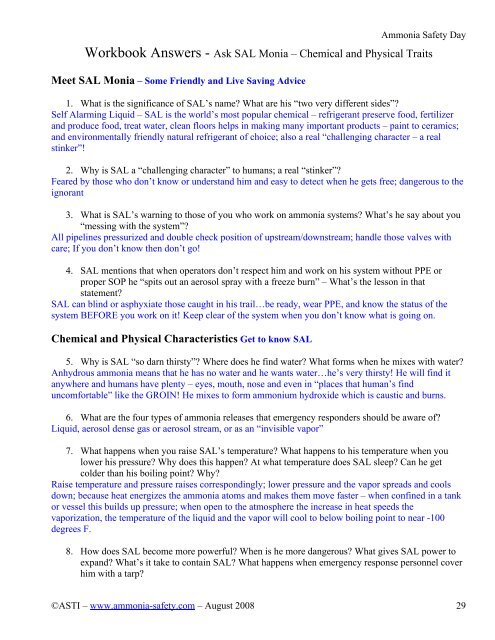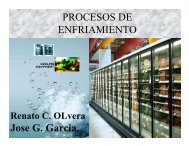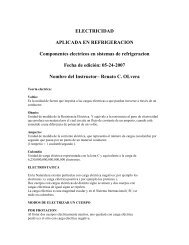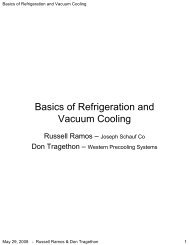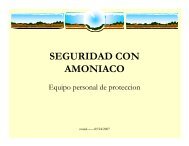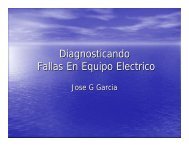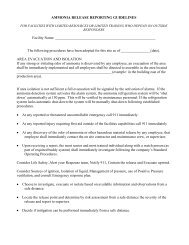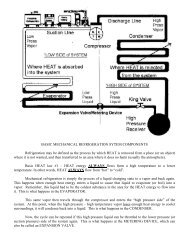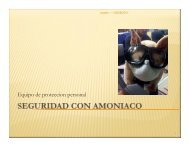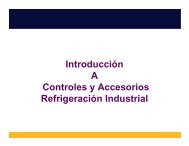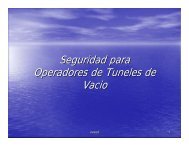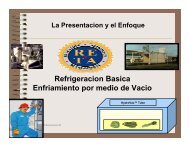Awareness Training Goals - Salinas Valley Ammonia Safety Day
Awareness Training Goals - Salinas Valley Ammonia Safety Day
Awareness Training Goals - Salinas Valley Ammonia Safety Day
Create successful ePaper yourself
Turn your PDF publications into a flip-book with our unique Google optimized e-Paper software.
<strong>Ammonia</strong> <strong>Safety</strong> <strong>Day</strong><br />
Workbook Answers - Ask SAL Monia – Chemical and Physical Traits<br />
Meet SAL Monia – Some Friendly and Live Saving Advice<br />
1. What is the significance of SAL’s name? What are his “two very different sides”?<br />
Self Alarming Liquid – SAL is the world’s most popular chemical – refrigerant preserve food, fertilizer<br />
and produce food, treat water, clean floors helps in making many important products – paint to ceramics;<br />
and environmentally friendly natural refrigerant of choice; also a real “challenging character – a real<br />
stinker”!<br />
2. Why is SAL a “challenging character” to humans; a real “stinker”?<br />
Feared by those who don’t know or understand him and easy to detect when he gets free; dangerous to the<br />
ignorant<br />
3. What is SAL’s warning to those of you who work on ammonia systems? What’s he say about you<br />
“messing with the system”?<br />
All pipelines pressurized and double check position of upstream/downstream; handle those valves with<br />
care; If you don’t know then don’t go!<br />
4. SAL mentions that when operators don’t respect him and work on his system without PPE or<br />
proper SOP he “spits out an aerosol spray with a freeze burn” – What’s the lesson in that<br />
statement?<br />
SAL can blind or asphyxiate those caught in his trail…be ready, wear PPE, and know the status of the<br />
system BEFORE you work on it! Keep clear of the system when you don’t know what is going on.<br />
Chemical and Physical Characteristics Get to know SAL<br />
5. Why is SAL “so darn thirsty”? Where does he find water? What forms when he mixes with water?<br />
Anhydrous ammonia means that he has no water and he wants water…he’s very thirsty! He will find it<br />
anywhere and humans have plenty – eyes, mouth, nose and even in “places that human’s find<br />
uncomfortable” like the GROIN! He mixes to form ammonium hydroxide which is caustic and burns.<br />
6. What are the four types of ammonia releases that emergency responders should be aware of?<br />
Liquid, aerosol dense gas or aerosol stream, or as an “invisible vapor”<br />
7. What happens when you raise SAL’s temperature? What happens to his temperature when you<br />
lower his pressure? Why does this happen? At what temperature does SAL sleep? Can he get<br />
colder than his boiling point? Why?<br />
Raise temperature and pressure raises correspondingly; lower pressure and the vapor spreads and cools<br />
down; because heat energizes the ammonia atoms and makes them move faster – when confined in a tank<br />
or vessel this builds up pressure; when open to the atmosphere the increase in heat speeds the<br />
vaporization, the temperature of the liquid and the vapor will cool to below boiling point to near -100<br />
degrees F.<br />
8. How does SAL become more powerful? When is he more dangerous? What gives SAL power to<br />
expand? What’s it take to contain SAL? What happens when emergency response personnel cover<br />
him with a tarp?<br />
©ASTI – www.ammonia-safety.com – August 2008 29


